Liz Truss's government reshuffle
Liz Truss became prime minister on Tuesday 6 September and immediately launched a substantial reorganisation of the ministerial team.
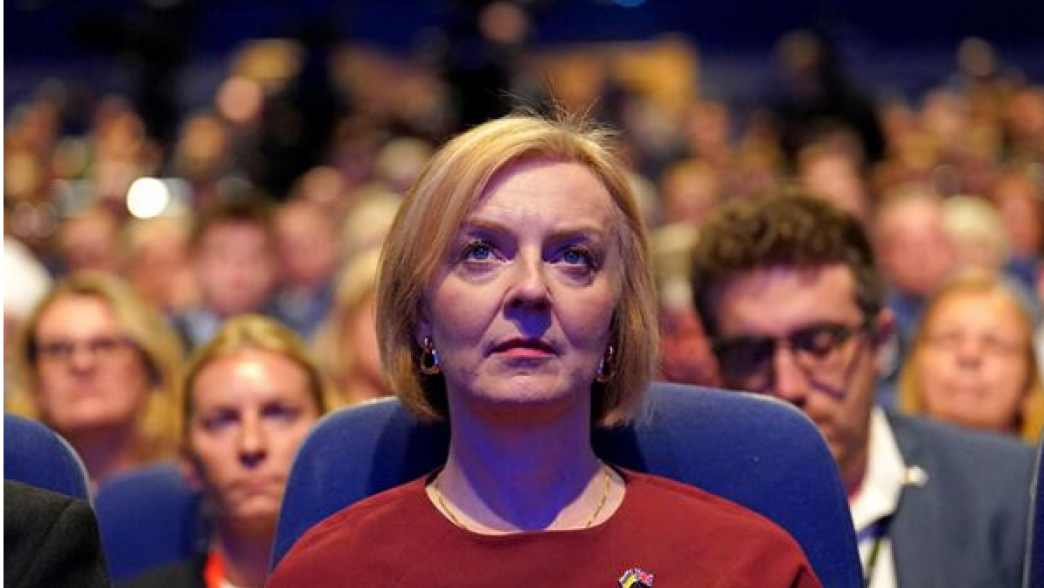
Liz Truss became prime minister on Tuesday 6 September and immediately launched a substantial reorganisation of the ministerial team, firing several key figures in Johnson’s government and moving many of the cabinet and those in the lower ministerial ranks. The appointments process was paused with the news of the Queen’s death, but it then continued at a slower pace until – we believe – it was completed on Sunday 2 October. Here, we assess how Truss’s first government looks compared to Johnson’s final team, and what this might mean for the way she governs.
1. The cabinet
How much movement was there in the cabinet?
The cabinet saw a high degree of change, both with people moving within it and those who have returned to cabinet, or entered for the first time. Truss also made changes to which ministers of state can attend cabinet, with Vicky Ford, responsible for international development, and Graham Stuart, responsible for climate change, both attending cabinet. One of the early candidates for the leadership, Tom Tugendhat, also attends cabinet as a minister of state for security.
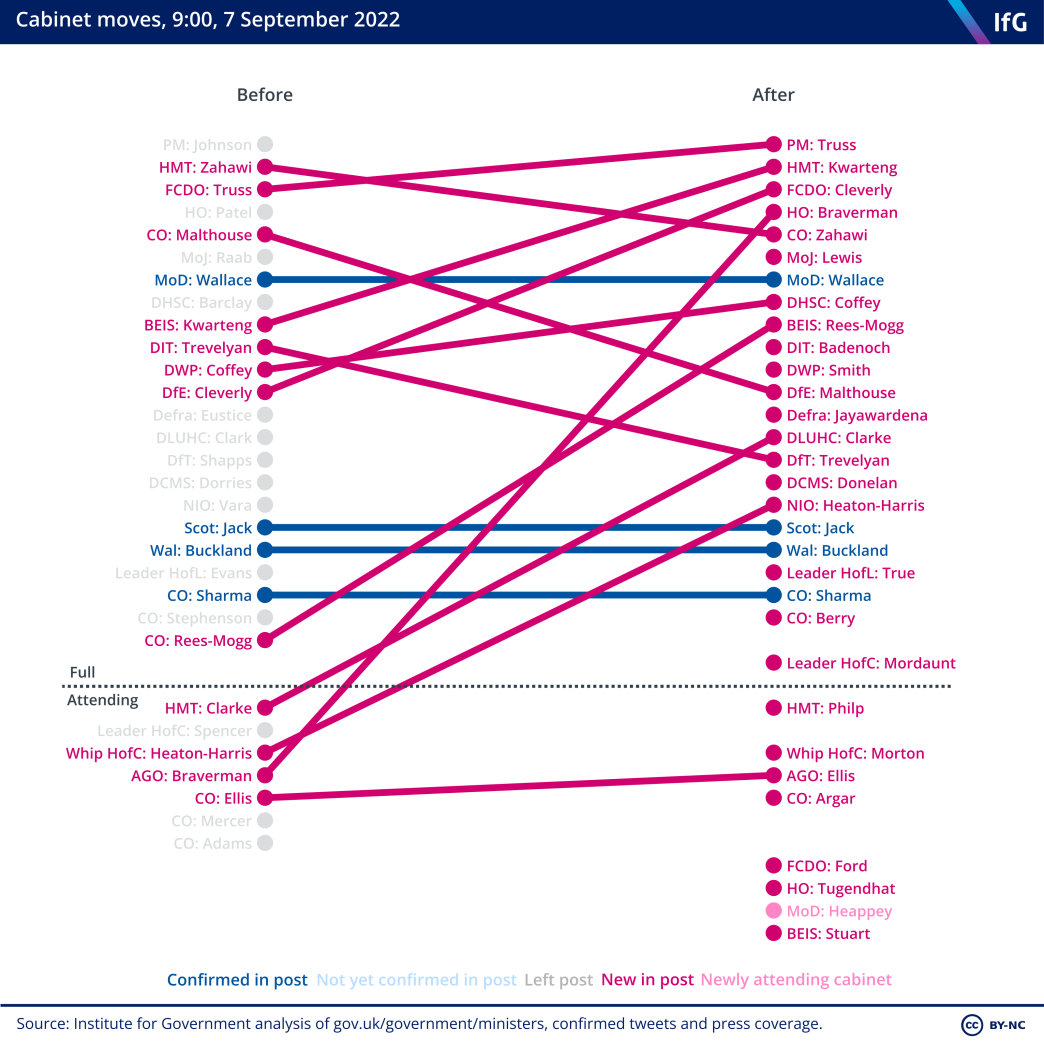
How much ministerial experience is there in the cabinet?
The new cabinet has varied levels of ministerial experience – several, including the prime minister, have held government roles since Cameron was in No 10. Chloe Smith, the new secretary of state for work and pensions, held a number of junior ministerial roles under Cameron but then had several years outside government before returning after the 2017 election. At the other end of the scale, Tom Tugendhat is on his first ministerial role (though he has chaired a select committee for several years).
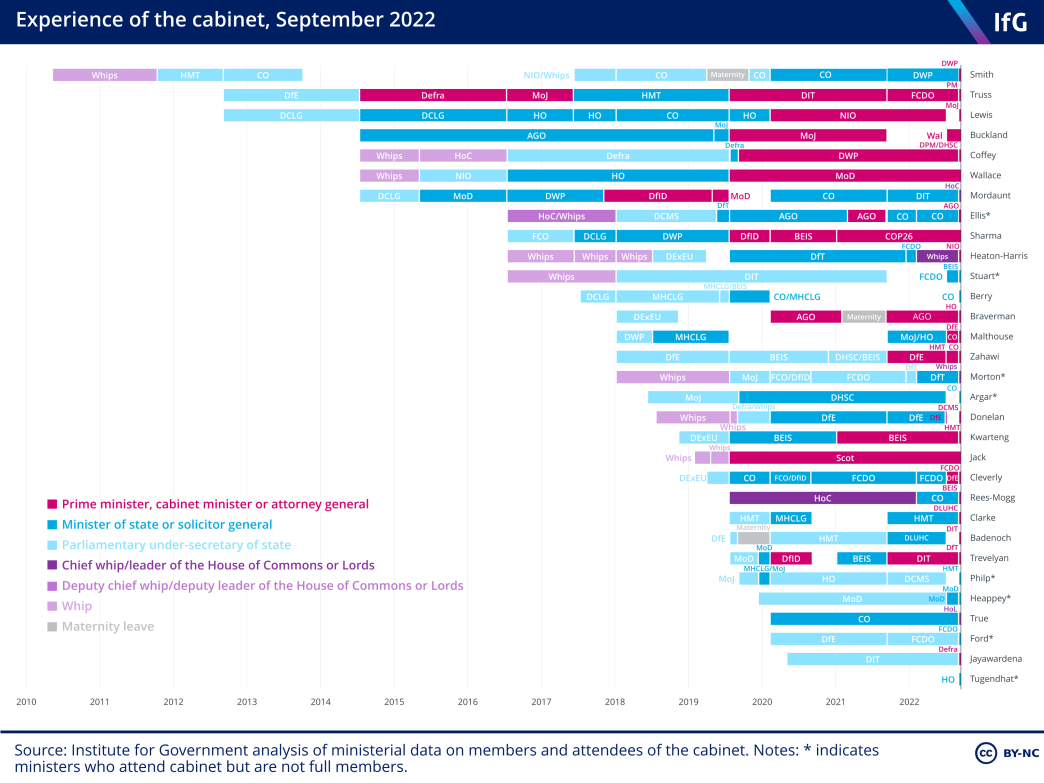
How many women are in the cabinet?
Truss’s first cabinet has a higher proportion of women attending than any recent cabinet, at 32% (10 out of the 31 attendees are women). This is notably higher than Johnson’s recent cabinets, but also slightly higher than May’s first cabinet, when 30% of attendees were women.
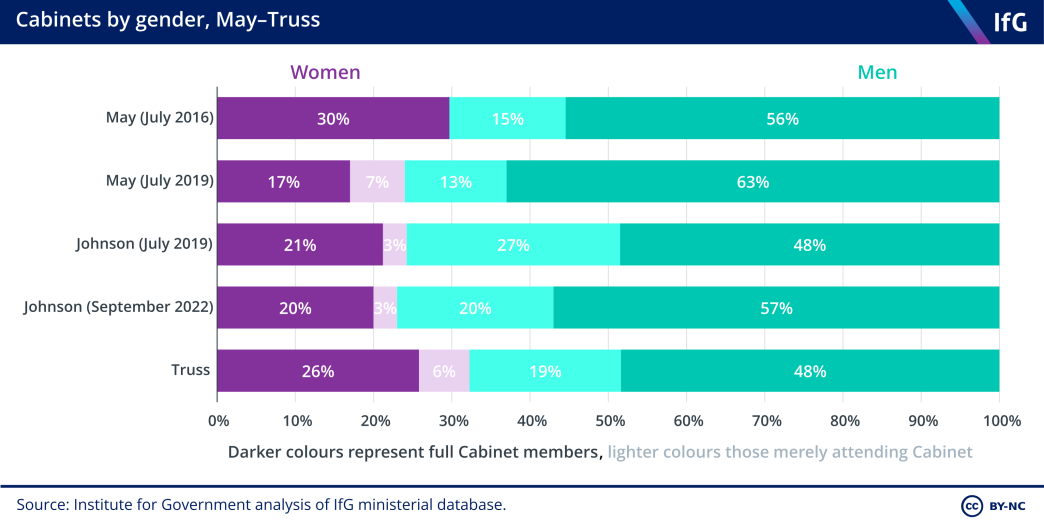
How much parliamentary experience is there in the cabinet?
Truss’s cabinet is the first to have no MPs who were elected before 2005. The largest grouping in the cabinet is those first elected in 2010, the same year Truss first entered cabinet, but half of the cabinet was elected after that (mainly in 2015 and 2017). Truss has appointed ministers who were first elected in 2019, but at junior ranks, not in the cabinet.
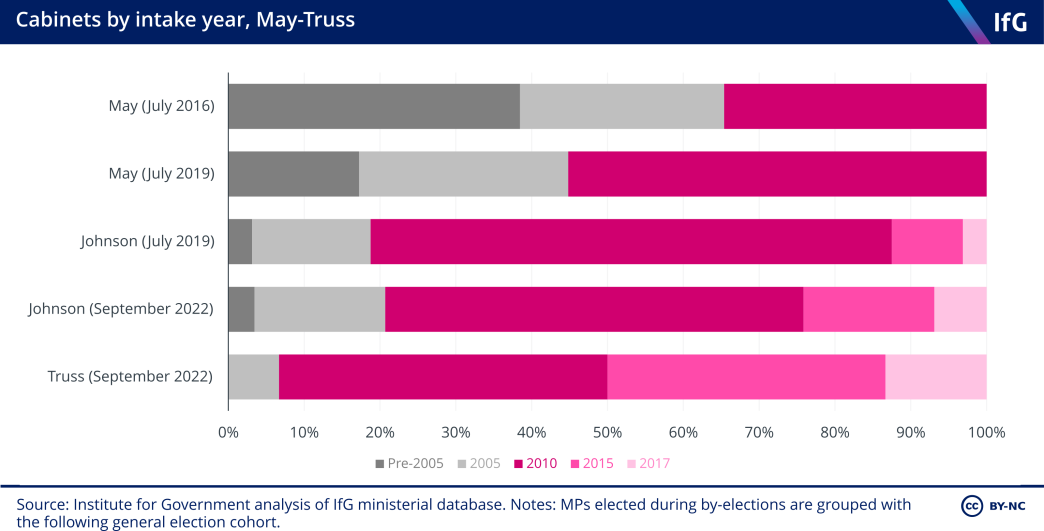
2. Government as a whole
How much ministerial change has there been across the government?
Looking at the government overall, it is clear there has been a lot of change: 28 ministers are doing the same job they were before, but 93 are new in post, of which 20 are completely new to government. Baroness Stedman-Scott was confirmed in her role as parliamentary under-secretary of state at DWP but has taken on a new joint role in the Cabinet Office.
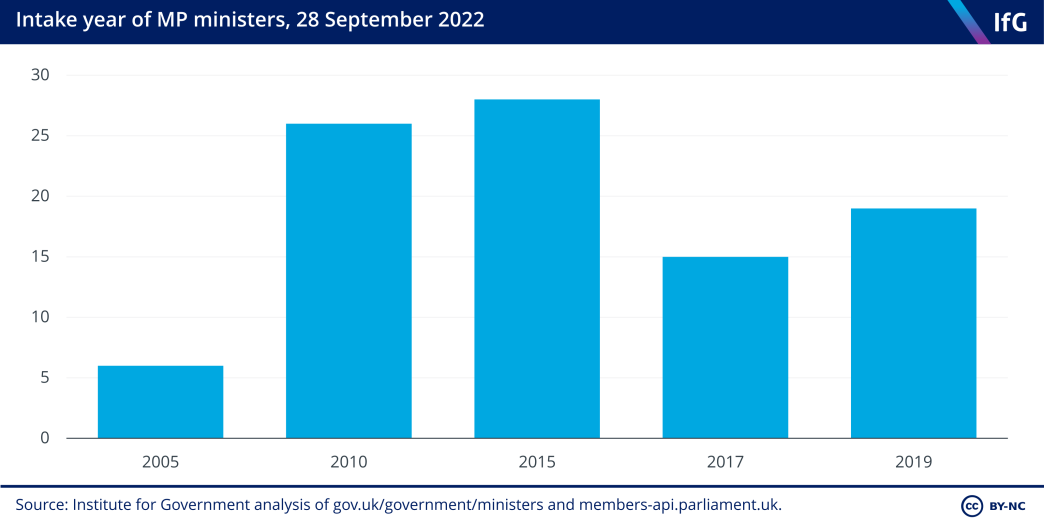
There has been a clear out across ranks, with only 20% of ministers still in a job they were appointed to by Johnson, 3% by May and just a single minister – Earl Howe, deputy leader of the House of Lords – still holding a post they were appointed to by David Cameron.
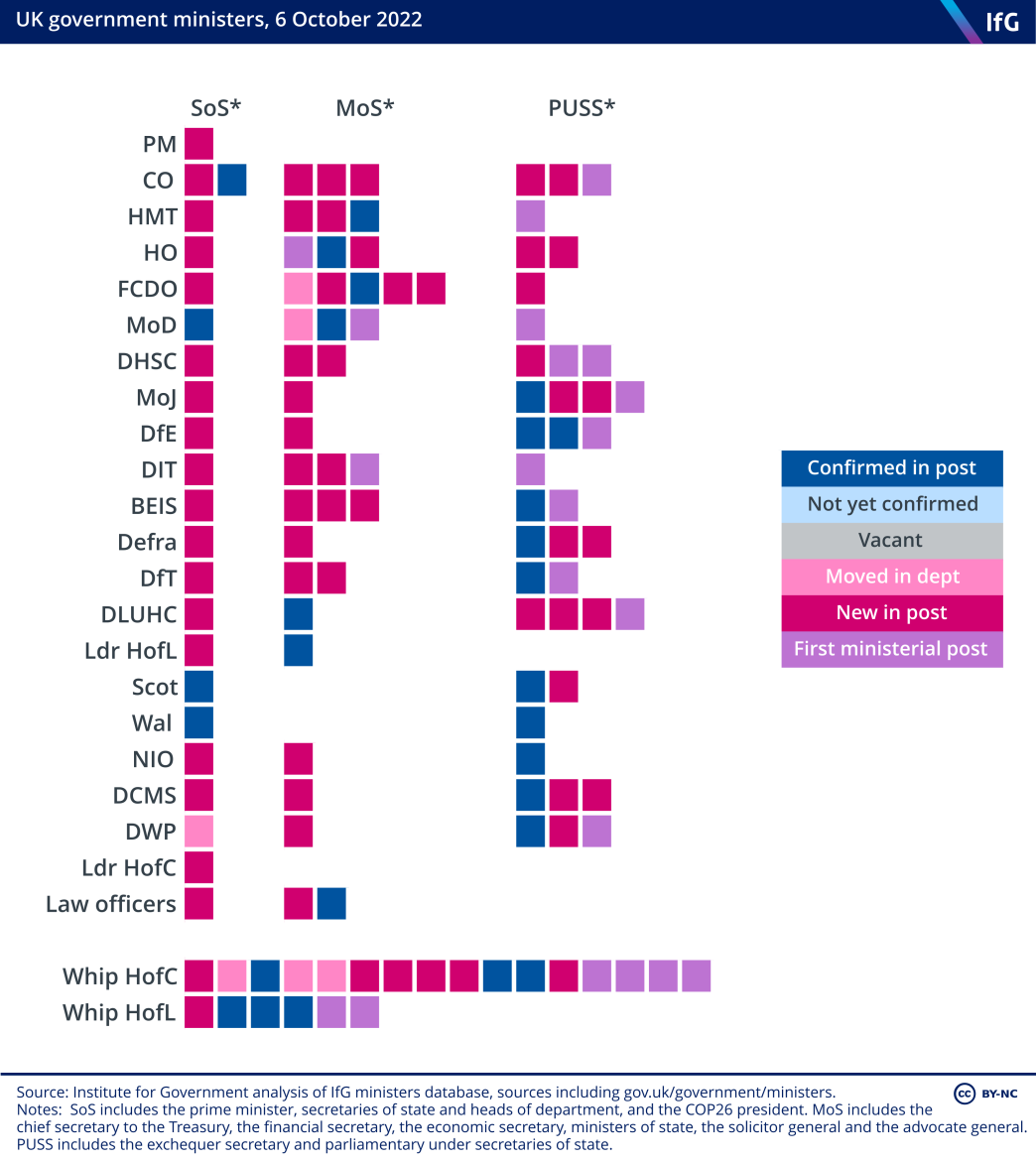
Which part of the country do the ministers represent?
The new government draws on MPs from across England, and a smattering who represent constituencies in Scotland and Wales. Liz Truss represents a Norfolk constituency and there is perhaps a stronger showing for the east of England than under Johnson. There is also a notable increase in the number of ministers from so-called Red Wall constituencies, a key battleground at the 2019 election.
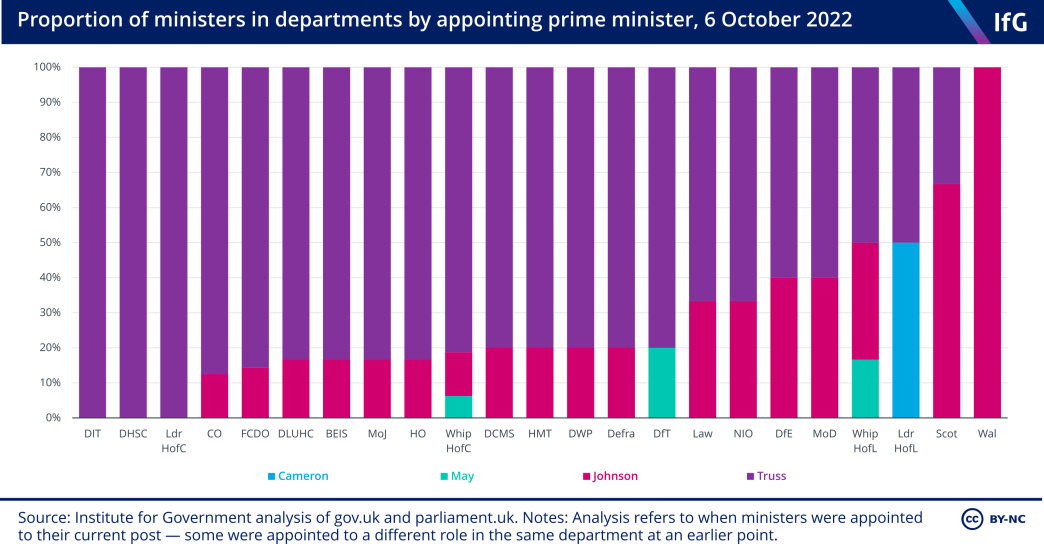
How much parliamentary experience is there in the ministerial ranks?
This government formation also saw the first set of MPs elected in 2019 appointed to government roles. There are 19 members of the government who were first elected in 2019, including former parliamentary private secretaries Joy Anderson and Claire Coutinho.
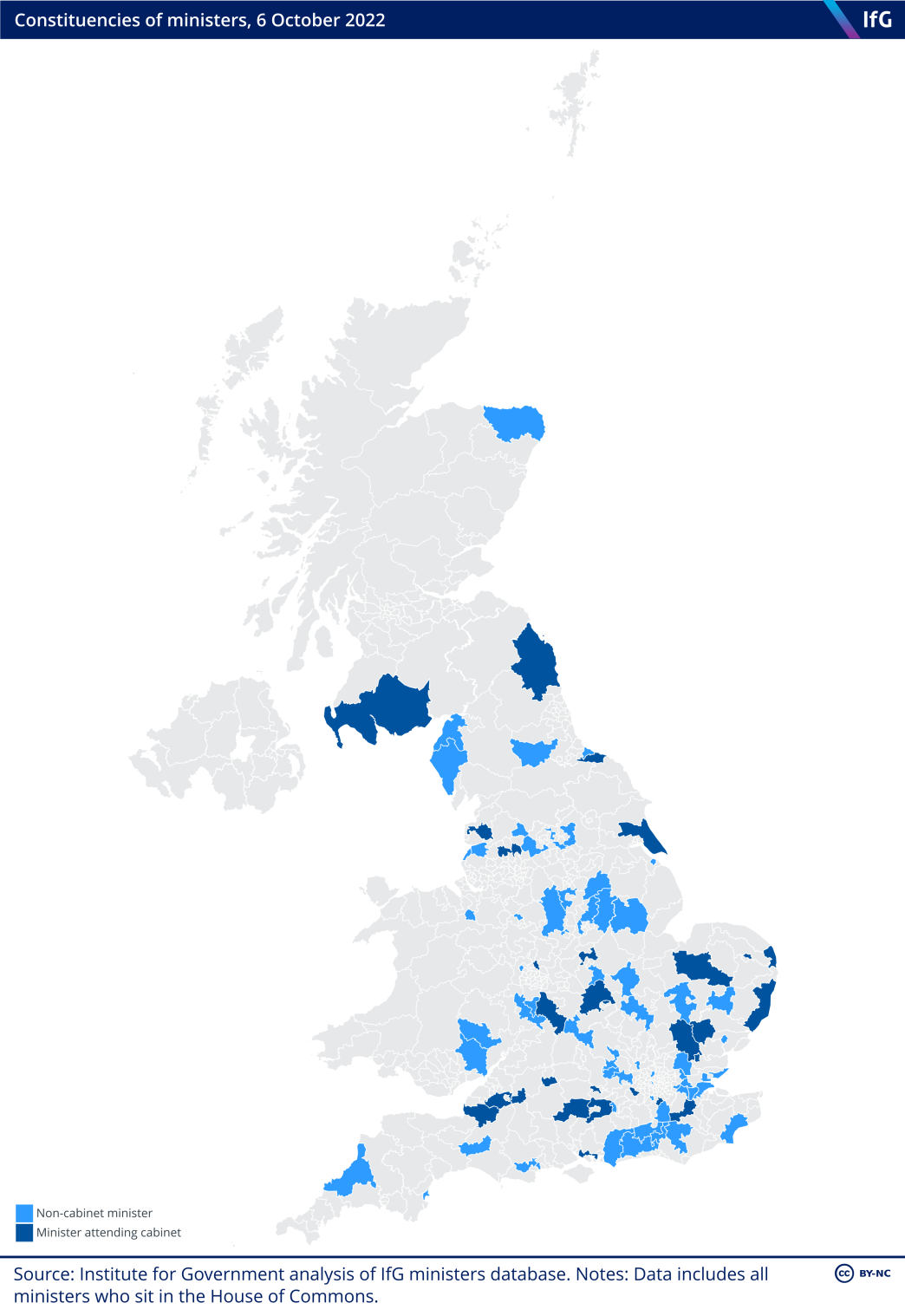
Who did the Truss cabinet back in the leadership contest?
Before Truss was appointed prime minister, reports suggested that she was planning to appoint ministers based on who had supported her leadership bid. That seems to have panned out – 18 out of 23 full cabinet members were Truss supporters during the leadership election, including Truss herself. One of these, Wales secretary Sir Robert Buckland, switched from Sunak to Truss during the contest. The other 5 were undeclared. Only one minister attending cabinet, the attorney general Michael Ellis, supported Rishi Sunak throughout.
Of the government as a whole, 84% of the ministers who declared their support during the contest supported Truss. Many of the Lords ministers have not declared who they supported during the contest.
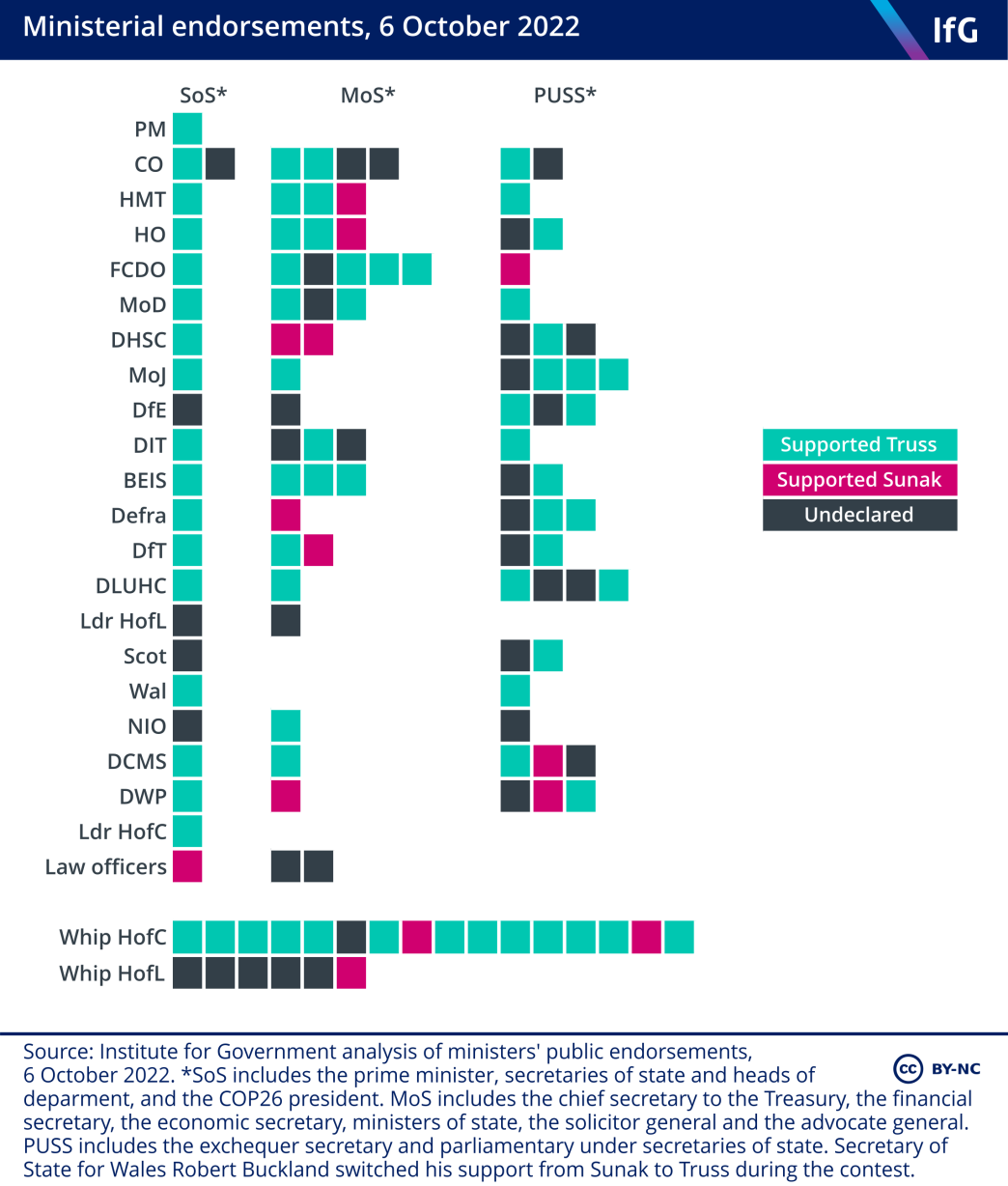
There are also 119 ex-ministers on the backbenches, including Truss’s leadership rival Rishi Sunak and other big names like Sajid Javid and Jeremy Hunt. It will be interesting to see what role they play in parliament – will they be a problem for Truss?
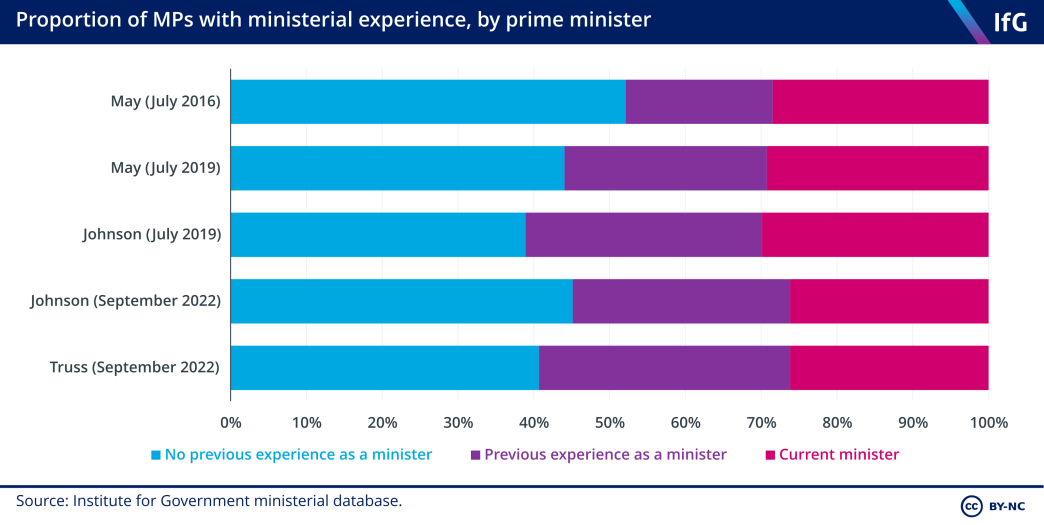
3. Changing ministerial roles
What has happened to joint ministerial roles?
One of the biggest changes Truss has made to the structure of government is that she has removed almost all joint ministerial roles – where a minister works across two departments, generally because there is a connection between policy areas in the different departments.
At the end of Johnson’s tenure there were eight joint ministerial roles, including Lord Goldsmith’s job at the FCDO and Defra, and Tom Pursglove’s brief on crime and policing across the Home Office and the MoJ. Truss has done away with all of these joint roles, but has created one for Baroness Stedman-Scott, working across DWP and the Cabinet Office; and one for the soon-to-be-ennobled Dominic Johnson, who is joining DIT and the Cabinet Office as a Lords minister.
However, the roles of minister for equalities and minister for women remain part-time, held by two ministers with other jobs (Nadhim Zahawi, chancellor of the duchy of Lancaster, and Katherine Fletcher, a junior transport minister, respectively). These are not quite the same as the other joint ministerial roles that Truss has done away with, however – the roles have always been held alongside another full-time ministerial role and do not generally have any particular overlap with the policy portfolio of the other role.
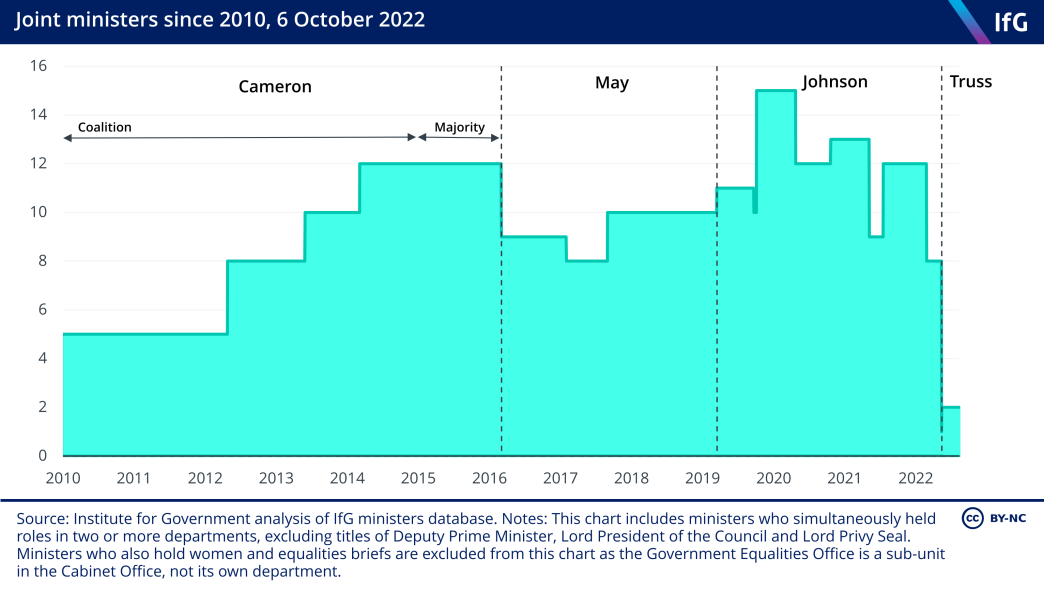
How have the number of ministerial jobs changed across departments?
This removal of joint ministerial posts has changed the number and allocation of junior ministerial roles across government. Overall there are now 120 individuals serving as ministers in the government. Several departments have seen their number of ministerial roles shrink – the Home Office has gone from eight to six ministers. There have also been variations in the seniority of ministerial roles – the Foreign Office now only has one parliamentary under-secretary, compared to two before Truss took over, while the Cabinet Office has gone from six ministers of state and one parliamentary secretary to three ministers of state and two parliamentary secretaries. In light of the energy crisis, BEIS appears to have been allocated additional resources in two additional ministers of state.
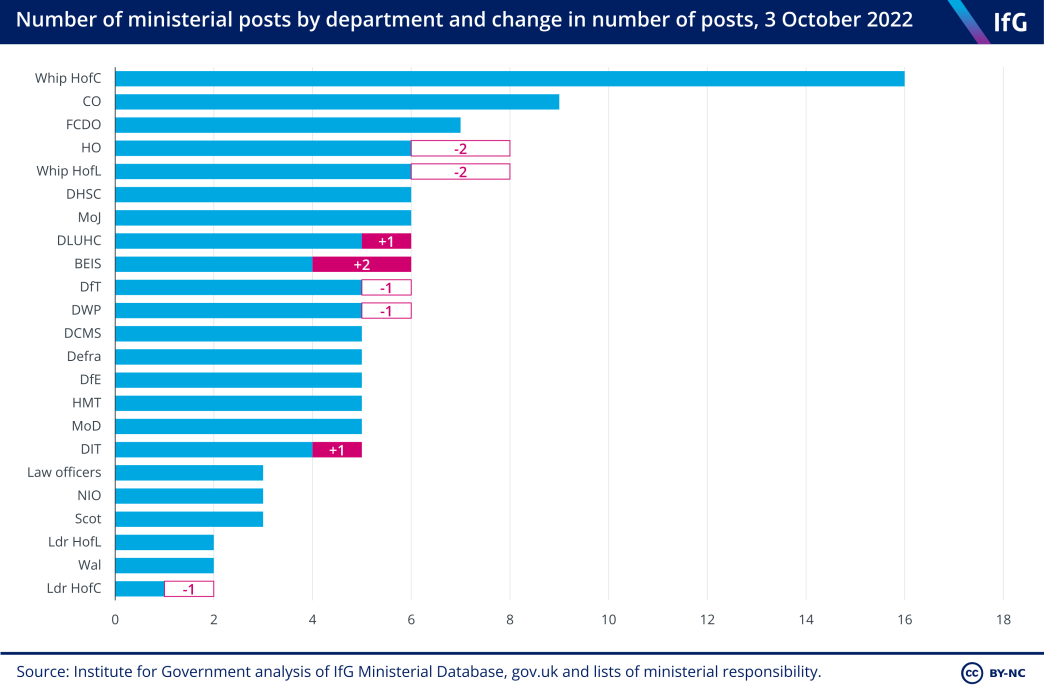
- Topic
- Ministers
- Keywords
- Government reshuffle Cabinet
- Publisher
- Institute for Government